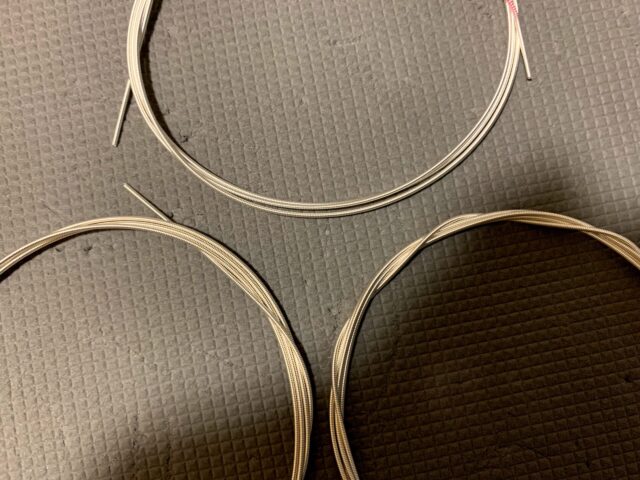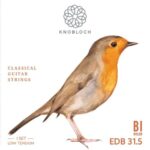I tried the new strings released by Knobloch. This series, called “Erithacus”, aims for a “natural sound” and has a lineup of treble strings using a new material called bio-nylon. I bought and used these strings and found them to be unique and fun to play for the first time in a long time.

The following article summarizes the string reviews/thoughts/information articles on this blog:
You can also read more about knobloch strings here:
- Erithacus, meaning the genus of robins.
- A model using bio-nylon exists
- New product strings arriving in an incompleted state
- Very fast stability on both treble and bass strings
- Round, but not blurry sounding
- Tension is firmly low, easy to play with nails
- The first low-tension and unique strings in a long time
Erithacus, meaning the genus of robins.
The name of the series, “Erithacus“, refers to the bird genus European robin.
I’m not sure which bird it is, but from the picture it looks like a European robin (Erithacus rubecula).
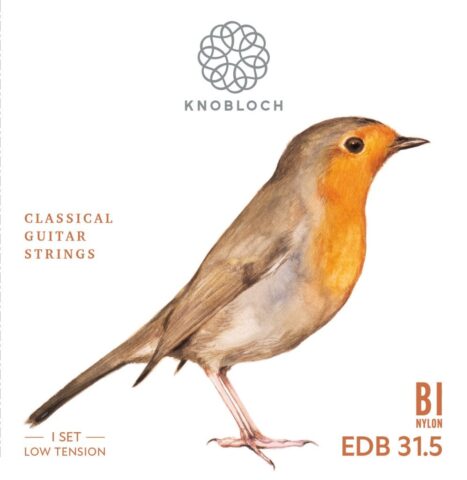
This string was recently released by Knobloch along with the Asad Brothers Memorial model.
I have already purchased the Asad Brothers model and will be reviewing it.
A model using bio-nylon exists
This series is characterized by the use of what is called ER Double Silver for the bass strings.
It aims for a natural, round sound and is available with the following treble strings:
| Model name | Treble Strings |
| EDB | Bio nylon |
| EDC | CX Carbon |
| EDN | SN Nylon |
| EDQ | QZ Nylon |
Notable among these are the bio-nylon model that use plant-derived materials.
The use of bio-nylon eliminates the “plasticky” sound found in nylon and carbon strings, and is said to provide a pure, natural, round sound.
I think this EDB model is the main one of the Elisacus series because the concept of bass string is also natural sound.
When it comes to bio-nylon, Aquila’s Perla uses the same material.
There are only a limited number of sources for treble strings, so maybe the treble strings for the EDB models are supplied by Aquila.

There is some interesting information about the source of the treble strings in this article:
New product strings arriving in an incompleted state
I ordered the Erithacus bio-nylon model directly from Knobloch about right after it was released, but they hadn’t made the package yet, so it came in this package:
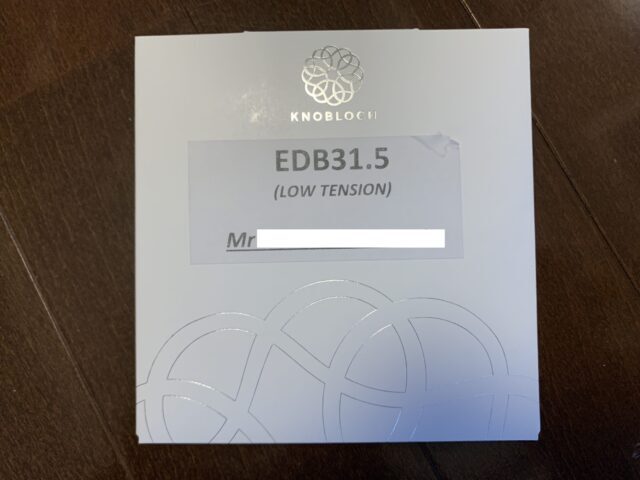
What a surprise, it had my name on it.
By the way, the packaging was very careful and I was very satisfied with the product, except that it took a long time to arrive.

For more information on how to order Knobloch strings directly, please see the following articles
Thus, there is no information on the back of the package, and here is an image what I borrowed from the Knobloch website.
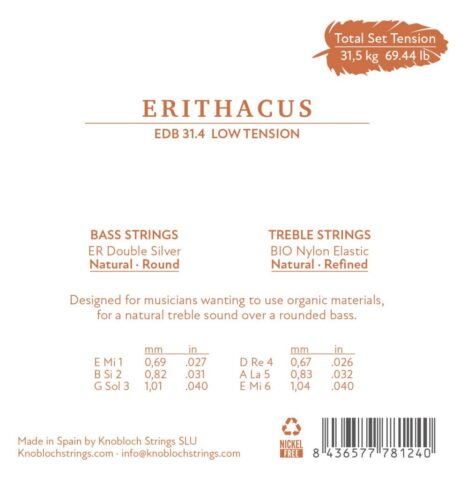
The emphasis is on the “natural sound” of both the bass and treble strings.
By the way, the model name is “EDB31.5”, and the “31.5” seems to indicate that the total tension is 31.5 kg (is the 31.4 in the image above a misprint or a value under development?) .
It sounds definitely low tension string.
Red markings on 2nd and 5th strings
The strings came in one airtight package with all six strings as shown below.
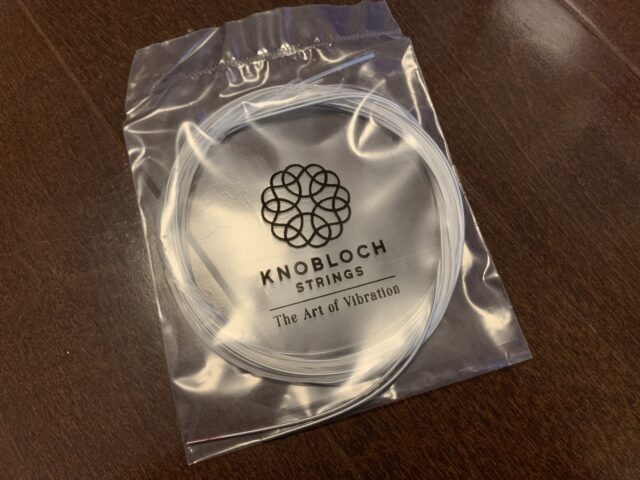
In the case of the Double Silver series, the bass strings and treble strings were separated, so maybe they will be separated when the package is completed.
Although there are six strings in one package, the ends of the second and fifth strings are marked in red, so there was no problem distinguishing the strings.
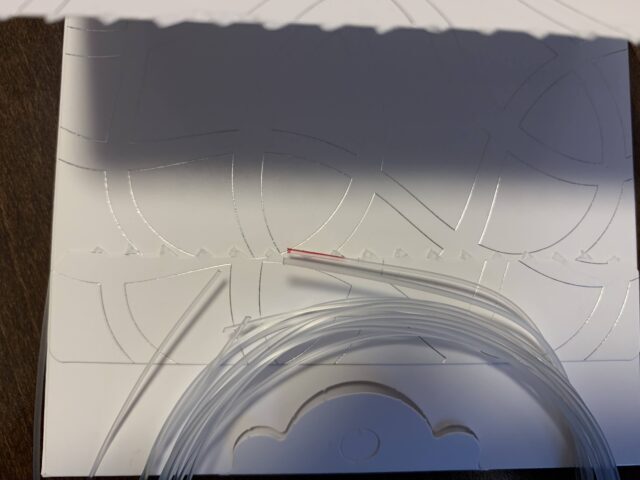
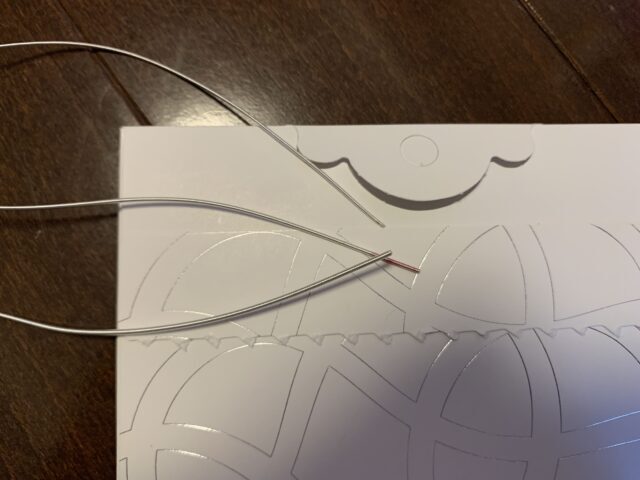
The bass string is looped at the ends, including the metal wire.
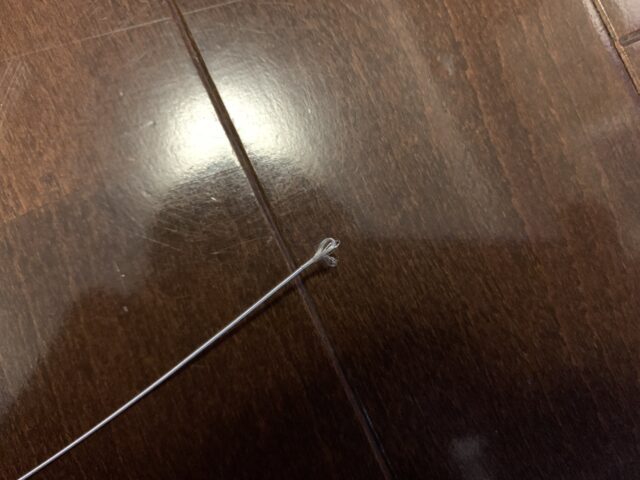
I think it is common not to attach this loop part to the bridge, but if you leave it as it is, it won’t go through the peg, so you need to cut it.
Knobloch may ask us to use this side for the bridge side so that you can easily stop the strings. I would like to ask the manufacturer.
Milky white, thick treble strings
The distinctive feature in terms of appearance are the treble strings, which are milky white rather than transparent.
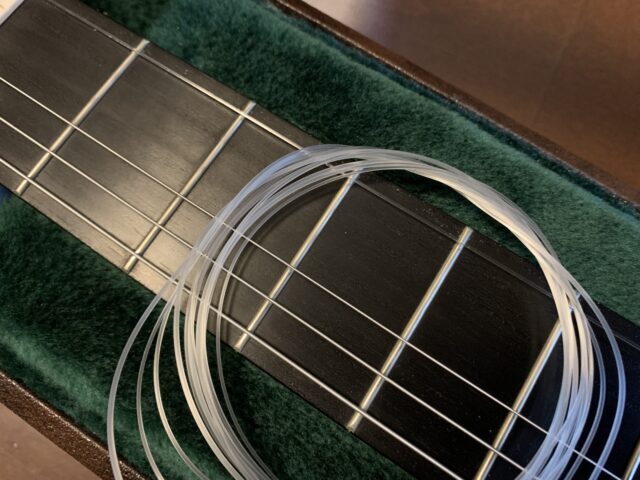
This is a characteristic of strings made of bio-nylon, and Aquila’s Perla was no different.
However, if you use all bio-nylon strings, you will not feel strange as following image.
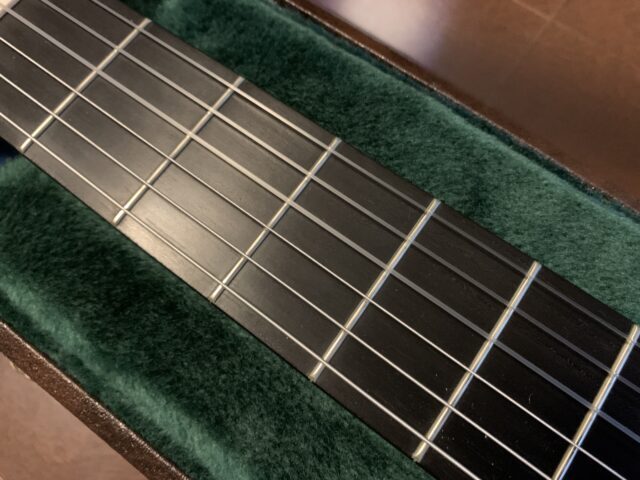
The treble strings are thicker in spite of the lower tension. This may be another characteristic of bio-nylon.
On the other hand, the bass strings are very fine and very supple because of the low tension.
Very fast stability on both treble and bass strings
The first thing I felt when I strung the Erithacus on my guitar was that it stabilized very quickly.
I put it up the night before, and the bass string is almost stable by noon the next day.
The treble strings drop a bit in pitch as I play them, but they stabilize very quickly compared to the other strings.
The longer the strings are not stable, the longer you can’t enjoy playing, so this is a great specification.
It may be said that it is suitable for actual battle.

For more information on how to stabilize your strings quickly, see this article:.
Round, but not blurry sounding
As for the sound, it is round and gentle as Knobloch says.
However, the sound is not a blur, as is often the case with cheap strings.
The core of the sound is solid, but the extra irritating sound is suppressed, and a natural sound seems to be achieved.
For this reason, there is no lack of momentum in the sound when playing or difficulty in producing a loud sound.
If there’s a drawback, it’s a bit hard to make a “sexy” sound.
When used well, the “plastic sound” can lead to a sense of sexuality, so in a sense, it may be a sound that is right on target.
Tension is firmly low, easy to play with nails
The tension is solidly low, as it is called low tension.
It is easy for the left hand to hold and the right hand to relax and play.
In case of low tension, treble strings tend to be thin, but Erithacus is rather thick thanks to bio-nylon.
For this reason, I felt that it was very easy to play, because the nails are well tensioned.
By the way, the tension above this one is EDB33.5, a model with a total tension of 33.5kg, but even here the tension seems to be low enough.
The first low-tension and unique strings in a long time
To be honest, I’ve been frustrated with my new strings lately, as I’ve found them to be a bit uninteresting.
However, the Erithacus is a string with a strong personality that has not been seen in a long time and is fun to play.
It’s also very rare to find a low tension string in the lineup, and I think it’s a string that people who are into it will really get into.
The only drawback is that the availability of the product is quite limited in Japan.
Currently, Aura sells this medium tension version (EDB33.5) in Japan, but does not offer the low tension version.
Strings by Mail doesn’t have it at the time of this writing, and the only way to get it is to use Knoblock direct sales.
Personally, I thought it was a pretty interesting string, and I hope it gets more treatment in Japan.
